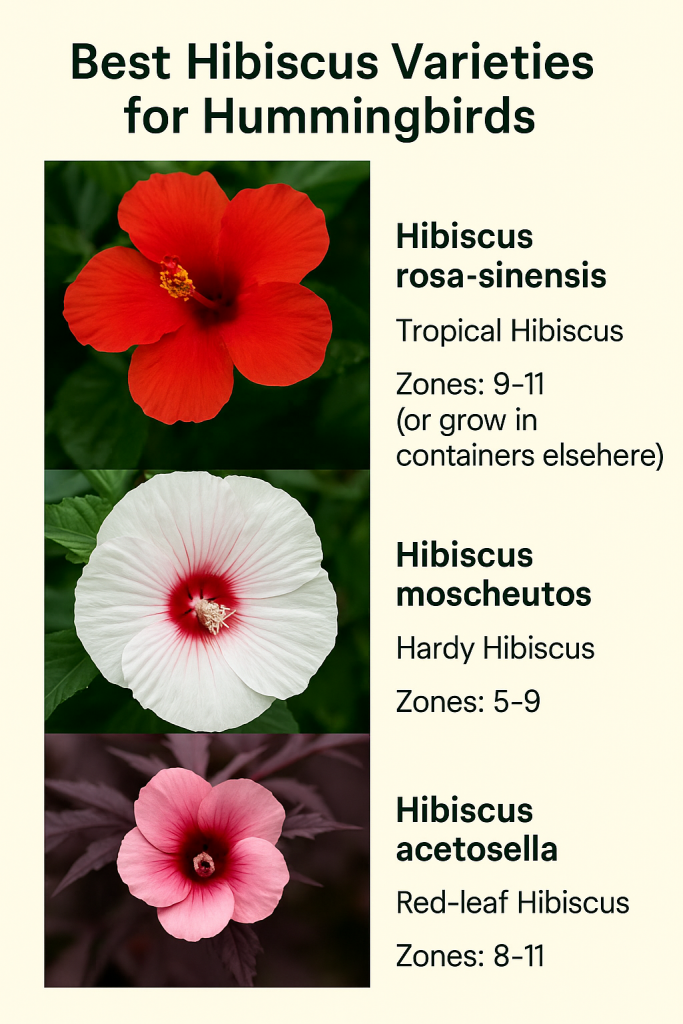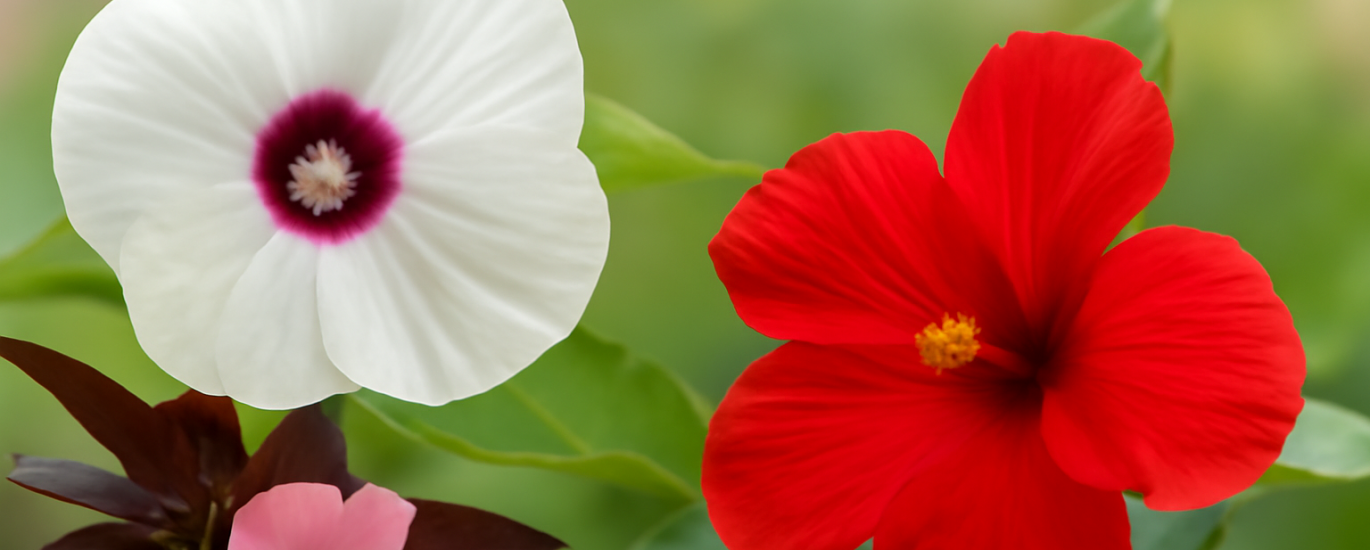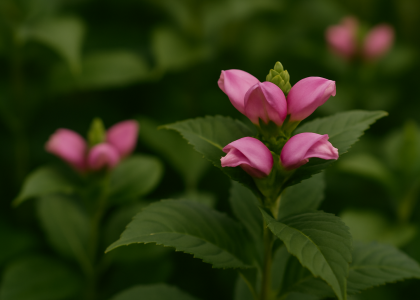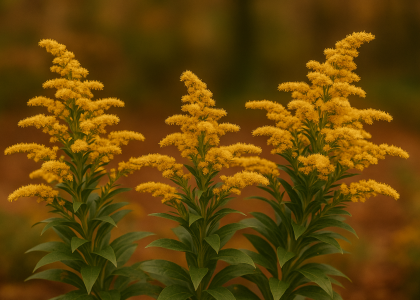Let Color and Wings Dance Together
Looking to create a garden that's not only bursting with color but also alive with the flutter of wings? Hibiscus plants are your go-to magnet for hummingbirds. With their large, nectar-rich blooms and vibrant shades ranging from fiery reds to soft pinks, they bring both pollinator activity and tropical elegance to your backyard.
Quick Glance: Hibiscus At a Glance
| Feature | Details |
| USDA Zones | Tropical Hibiscus: 9–11 |
| Hardy Hibiscus | 5–9 |
| Sunlight | Full sun (6+ hours/day) |
| Soil | Well-draining, slightly acidic (pH 6.0–6.5) |
| Watering | Regular; moist but not soggy |
| Bloom Season | Summer through early fall |
| Wildlife Benefits | Attracts hummingbirds and butterflies |
Meet the Stars: Best Hibiscus Varieties for Hummingbirds
1. Hibiscus rosa-sinensis (Tropical Hibiscus)
- Zones: 9–11 (or grow in containers elsewhere)
- Bloom Colors: Red, orange, yellow, pink
- Tips: Perfect for patios or as houseplants in cooler zones.
2. Hibiscus moscheutos (Hardy Hibiscus)
- Zones: 5–9
- Bloom Colors: White with red centers, pink, deep red
- Tips: Ideal for perennial borders, survives frost.
3. Hibiscus acetosella (Red-leaf Hibiscus)
- Zones: 8–11
- Highlight: Deep burgundy foliage and pink flowers—adds contrast and texture.

Garden Design: How to Create a Hummingbird Paradise
- Color Strategy: Focus on red and orange shades—these are hummingbird favorites.
- Layered Planting: Pair hibiscus with salvia, bee balm, or lantana for continuous nectar.
- Water Source: Add a small fountain or birdbath nearby.
- Spacing: Allow 2–3 ft per plant for air circulation and full bloom display.
Seasonal Care & Maintenance
Spring
- Apply slow-release fertilizer.
- Prune old growth to encourage new blooms.
Summer
- Water consistently, especially during heat waves.
- Deadhead spent flowers to prolong bloom.
Fall
- For hardy types, mulch heavily to protect roots.
- For tropical types, bring indoors before frost.
Winter
- Container plants: keep in sunny windows or greenhouses.
- Outdoor hardy hibiscus: leave stems until spring to protect crowns.
Common Issues & Solutions
| Problem | Cause | Solution |
| Yellow leaves | Overwatering / poor drainage | Improve drainage, reduce watering |
| Aphids / Whiteflies | Sap-sucking pests | Spray neem oil or insecticidal soap |
| Bud drop | Temperature swings or stress | Keep soil evenly moist, avoid shock |
Companion Planting Picks
- For Pollinator Diversity: Bee Balm, Zinnias, Coneflowers
- For Contrast & Color Harmony: Ornamental grasses, Coleus, Cannas
- For Container Combo: Sweet Potato Vine (trailing), Salvia (upright)
Garden Therapy Tip
Watching hummingbirds hover and feed is not just delightful—it can help reduce stress and increase your connection with nature. Planting hibiscus is more than gardening; it’s an act of mindfulness.
Bonus: Container Growing Tips
- Choose 14"+ diameter pots with good drainage holes
- Use lightweight potting mix with added compost
- Rotate regularly for even sun exposure
- Overwinter indoors with grow lights if needed
Final Thought
Bring movement, color, and life to your garden with hibiscus—a plant that hums with happiness and flutters with natural magic. Whether you're on a balcony or have a full yard, there's a hibiscus (and hummingbird) waiting for you.
Pin This | Download Printable Care Guide (PDF) | Explore More Hummingbird Plants on Greenmuse.io





